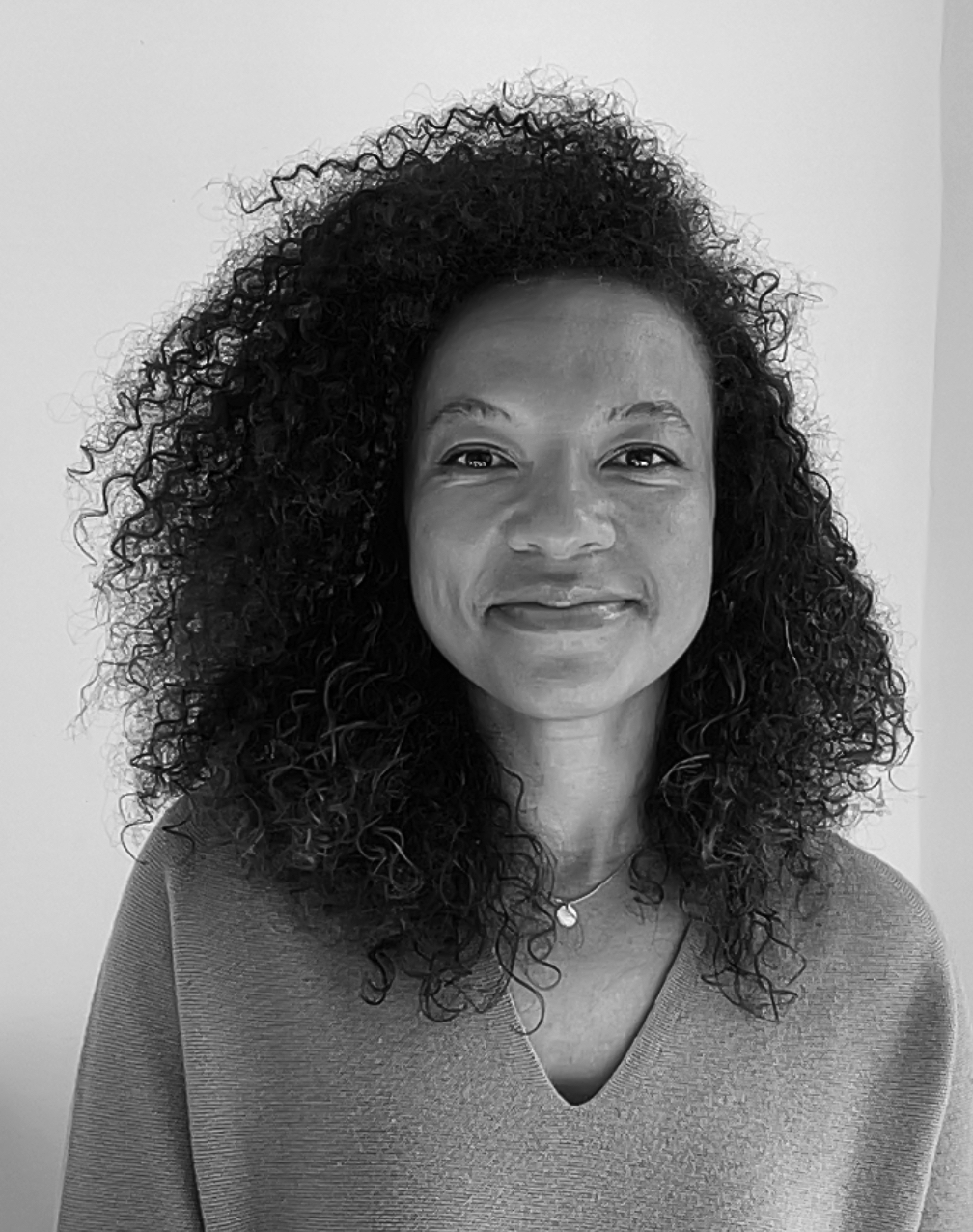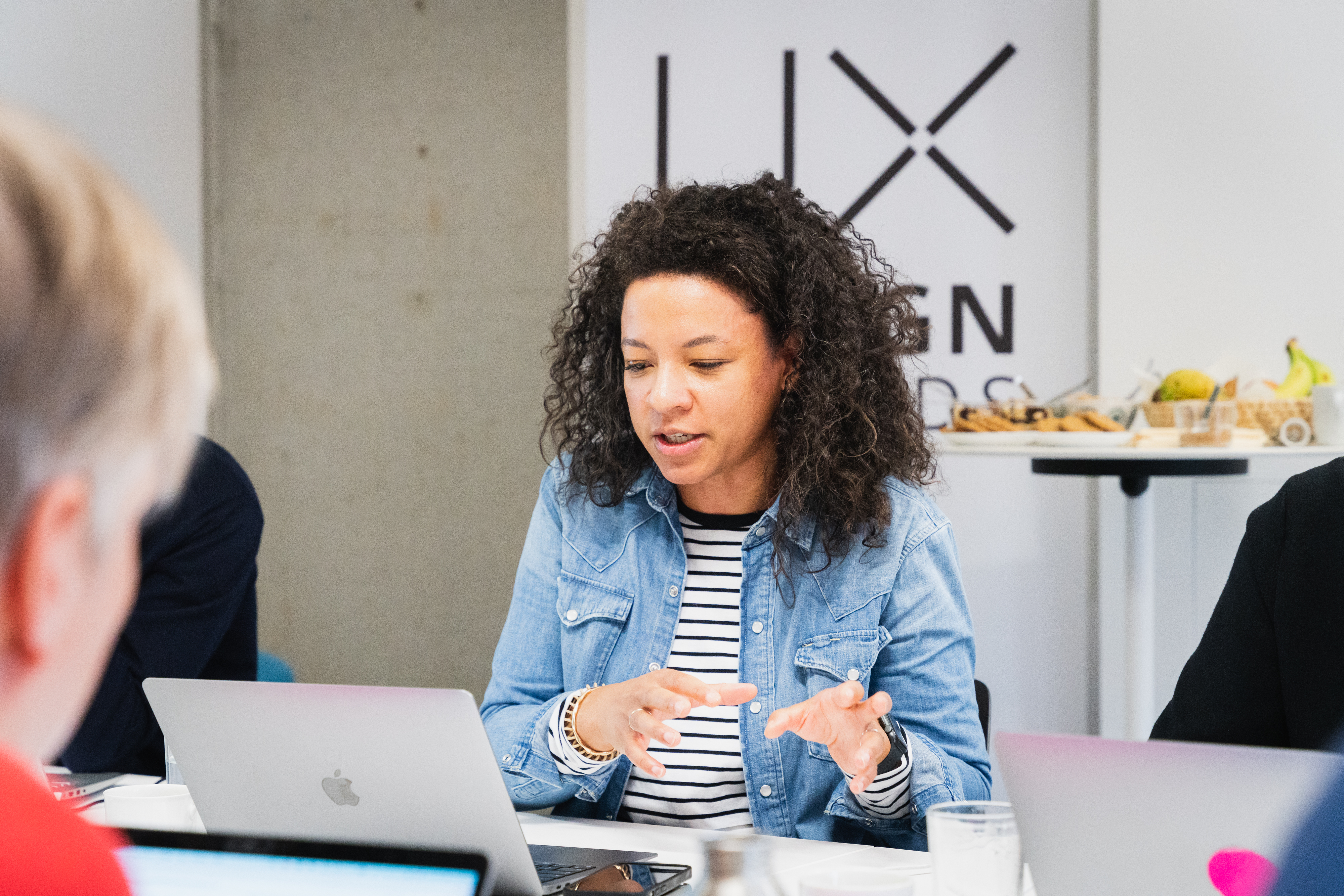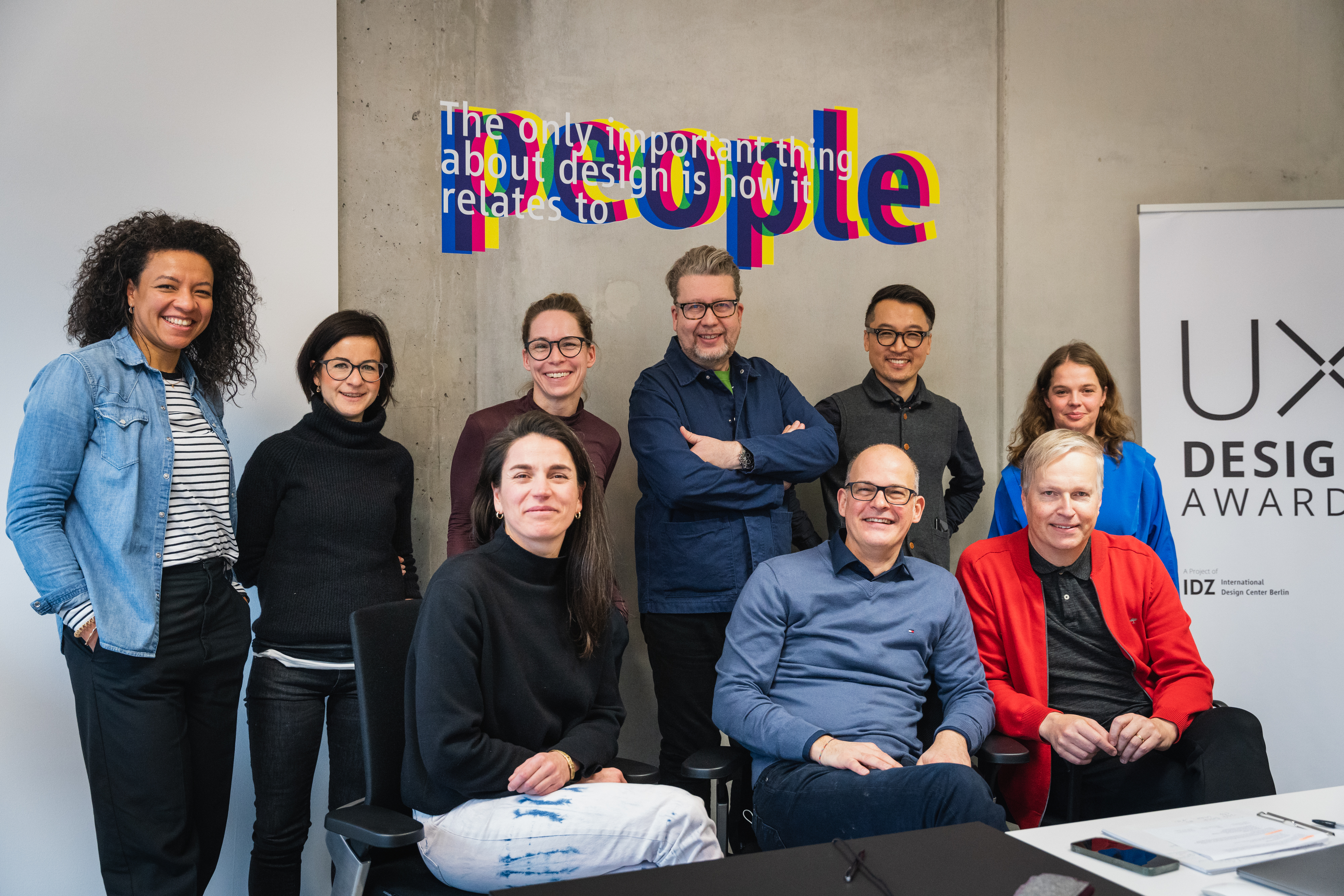Meet the Jury: Gennett Aku Agbenu
A conversation between Ake Rudolf and Gennett Aku Agbenu, chair of the jury for the UX Design Awards

Gennett, can you tell us a bit about your work and background? What do you do, and what pushes you in your daily job?
I am a designer. I have worked for several agencies like Jung von Matt and MetaDesign in the UK, Germany and China. Today I am the head of brand expression at Siemens AG. This means translating business strategy into brand and design strategy, defining principles and basic frameworks for the most important offline and online touchpoints and empowering everybody working with the brand to bring those principles to life in their respective projects, campaigns, services or products.
I love learning new things, working with people from different professions and backgrounds, solving problems and crafting experiences. For me, design is a lens to understand the intent of business and people and to craft experiences that are as close as possible to that intent.
You’ve chaired the awards jury for the first time in Spring 2023. How did you experience judging the competition?
That's true – and I am looking forward to the next round. I liked the conversations with people from different fields of expertise. I remember being impressed by the diverse range of submissions and the high quality in the New Talent category… certainly one of the reasons why the jury agreed to provide the Gold Award in this category.
Was there anything that caught your eye among the competition entries? What trends or developments have you observed?
In addition to the high number of entries in the healthcare or femtech sector, there were also very interesting entries from the industrial environment leveraging the potential of generative AI. Working for a tech company myself, these were interesting cases to study and discuss.
Surprisingly, there were a rather small number of entries dealing with topics like cryptocurrency, sustainability or mental health. I assumed these topics would be significantly more relevant among submissions, as media coverage and startups around these topics are also increasing. However, the few submissions in this field were promising regarding the provided depth of research, business model ideas and visualization. I hope to see more here in the next few years.

You work in a design leadership position for a global technology company. How did the role of design, especially UX design, change in your field over the last few years?
Yes, there are many areas where design and UX have become more important in recent years. Siemens has changed from an industrial conglomerate to a focused technology company and now belongs to the top 10 software companies.
Spin-offs and initial public offerings of former business units such as Siemens Healthineers or Siemens Energy have accompanied this transformation, among others. I was lucky enough to accompany this transformation process in terms of design strategy. Design has helped make this change less scary, easier to understand, and more inspiring – and most importantly, it has created the right foundation for new identities to build upon.
At the same time, digital transformation accelerated through the recent pandemic. As Andreessen rightfully argued, every company is becoming a software company to some degree, no matter in which sector its original roots may lie. Siemens is helping its customers to successfully master this digital transformation through the technology we provide. Our aspirations for future software solutions in terms of UX will be important for us and our customers. Design has to provide new ways to reduce complexity or abstractness in the industrial field as it already aims for in our private interactions.
Furthermore, I also see a lot of potential for design in the field of sustainability, innovation and human resources. Attracting and retaining the right talent to keep pace with the speed of technological change has become more challenging for organizations. Redesigning processes to help people manage the flood of information or designing spaces people want to ‘come back’ are only a few examples where design plays a crucial part.
What has changed in the collaboration between companies and external agency partners in recent years? How do you expect the roles of internal design functions and external partners to evolve in the near future?
The setup for collaboration is always changing in terms of the projects and topics we focus on. We keep the circle of the agencies we work with as small as possible. Having said that, a global company like Siemens – located in nearly every region – still works with a range of agency partners who need to be trained and kept informed regularly, which is very important for us. Our internal teams have also been growing over the last few years, and we increasingly collaborate with very senior freelancers who specialize in specific design fields – which might be rooted in the fact that the struggle for talent is as fierce for our agency partners as it is on our side.
We've seen some notable applications based on generative AI and LLM (large language models) catch on recently. Which technologies will play an important role in the coming years, in your opinion?
Next to the ones we already touched on I am very curious about future mobility solutions and immersive reality technologies. So far, I have never owned a car myself. Nonetheless, I enjoy interconnected shared services and offerings that allow for additional and new ideas regarding usage and experience. Redefining interfaces in a 3D environment through spatial design – as recently introduced by Apple – is going beyond traditional app design. This will provide users with a more immersive and intuitive experience and it will have an enormous impact on how we interact with our daily tools, or on how the industrial metaverse will look like.
What's still missing for you when it comes to the focus of UX design?
It's still the connection between business and design and strategy and design. I see a lot of cases where this is missing or not articulated clearly. During my last jury session, we spent at least 70% of our time speaking about the WHY of every project before delving into the design aspects. If this part is poorly defined a closer examination will be unlikely. It is these discussions that I enjoyed most during the last session.
What makes a great user experience for you? What can go wrong?
Well – maybe a recent example of my non-working life; my husband and I enjoy running a lot, and we wanted to keep things more serious regarding tracking our behavior. We both started with different smartwatches to do so, but of course, we regularly compared the outcome and usability.
Let’s put it this way; I quickly learned that I value accuracy, long battery life, as well as extended and well-designed data visualization more than staying true to one brand and wearing a Swiss army knife on my wrist. So, aside from admitting that my non-techy husband made the better choice, I would also say that I appreciate the basics more if done well – than being distracted by more features which don’t help me with the ‘problem’ I wanted to solve in the first place. This applies to many other scenarios as well… technologies that do the ‘basics’ well, like working reliably or on time or securly, are not easy and make a big difference.

Finally, what advice would you offer future UX Design Awards participants?
Sure, two things on that. First, comprehensive design systems and libraries are complex and challenging to be established in every company. I feel you. And although I enjoy diving into the details of a good design system – it is ‘only’ fulfilling the must-have category rather than the award category. As designers, we should not limit ourselves to creating the perfect system but also think about how to become more creative within these boundaries and which role design can play beyond buttons and patterns.
And secondly, coming back to what was mentioned earlier: it's very important how we connect our ideas to business impact. How we sell our ideas or how we help designers and non-designers understand why this idea is having an impact is something we should practice at every opportunity. The UX Design Awards are one of those opportunities to get additional input and feedback from renowned judges and to train that muscle. Looking forward to doing that together!
Dear Gennett, thank you so much for your insights!
Gennett Aku Agbenu is head of brand experience globally at Siemens. Passionate about helping brands to “do different” to make a difference and shape a positive future today. In her career, she has worked with various brands in the automotive, travel, banking, healthcare, energy, and home appliances sector.
Gennett holds a Diploma and MA in Communication Design and an MBA in Business Administration. She is a lover of creativity, humor, and excellence. And so far, she has lived on three continents: Londoner at heart, Berliner by default, and Beijing-inspired.